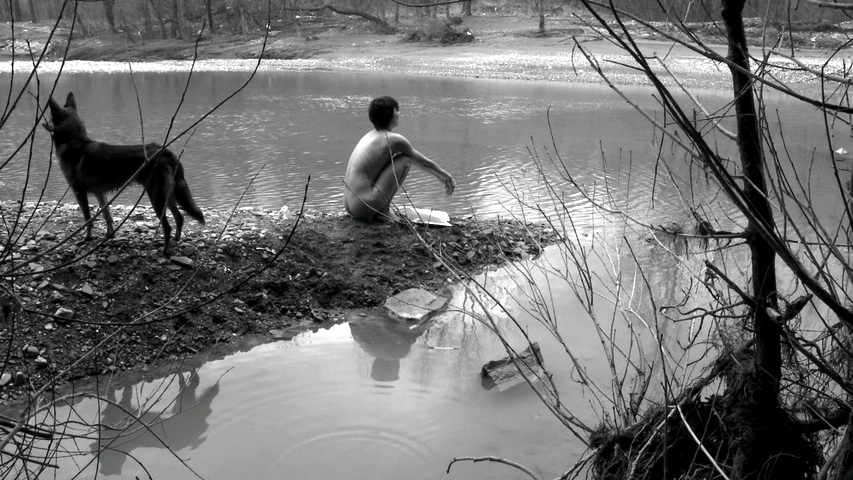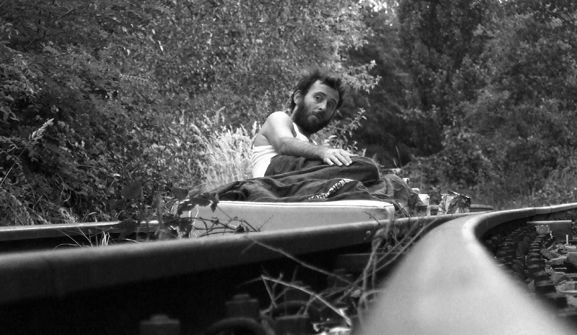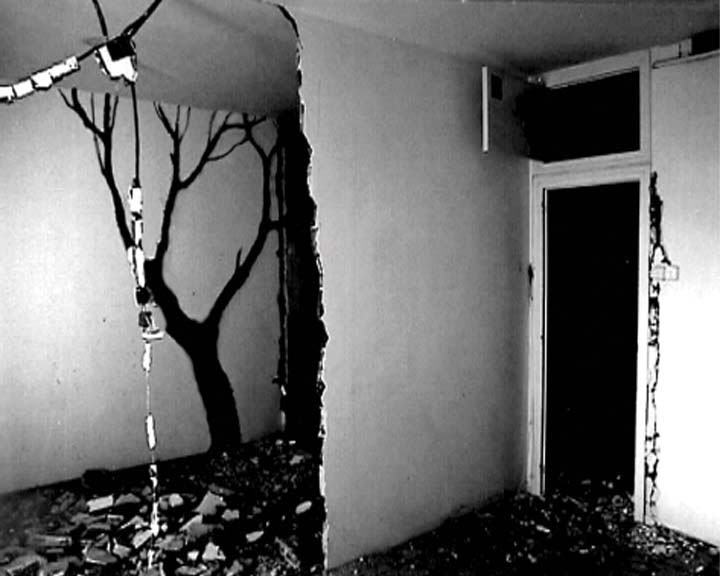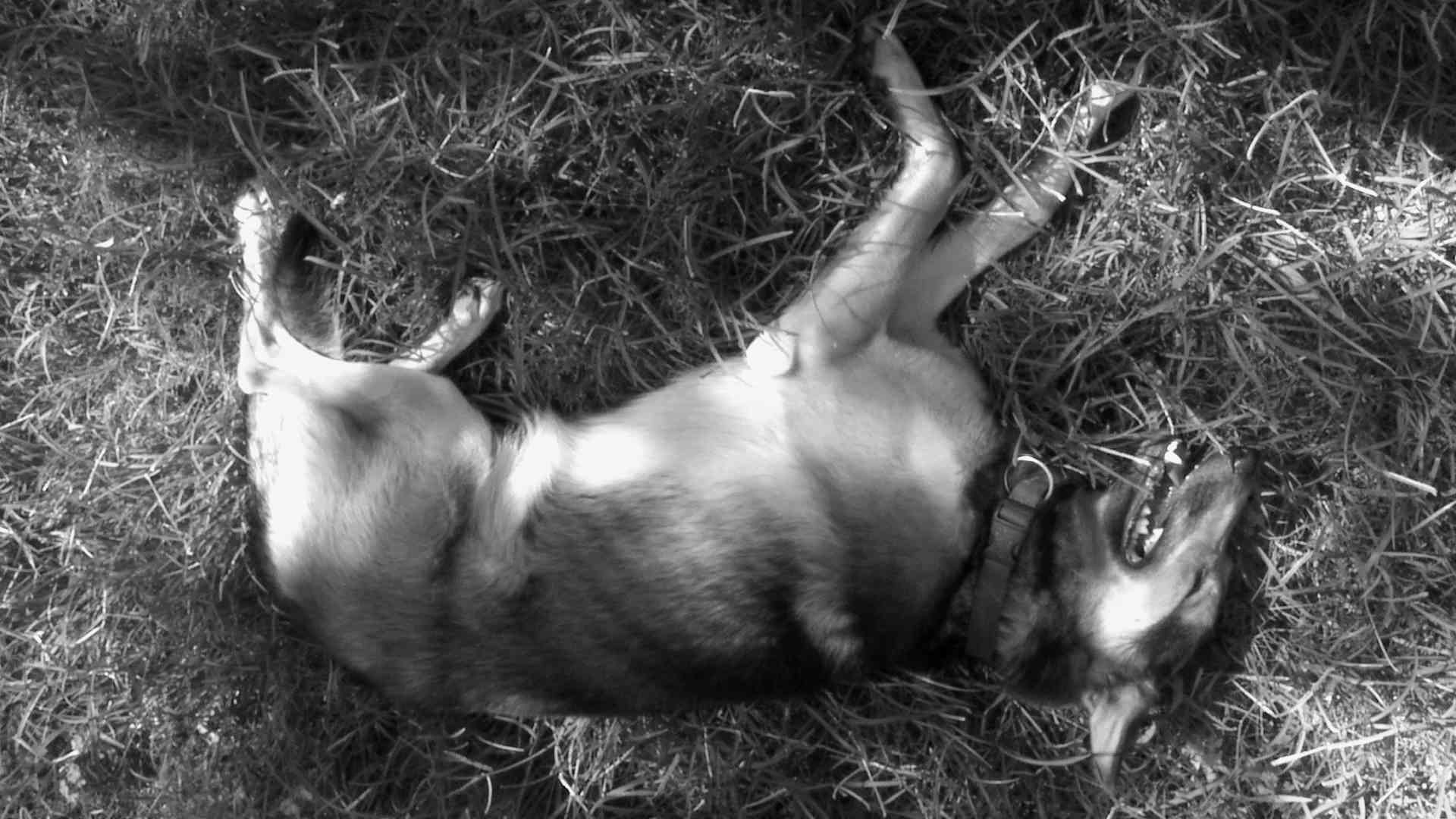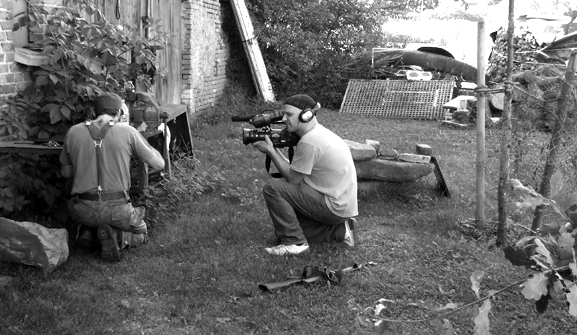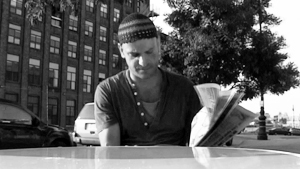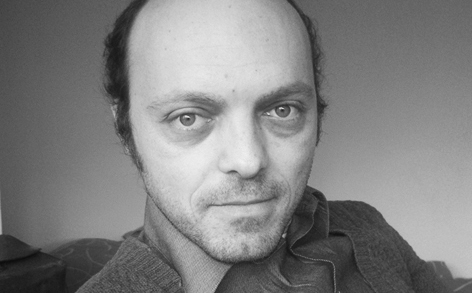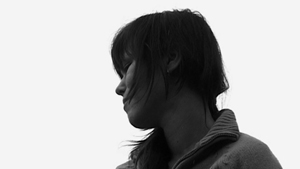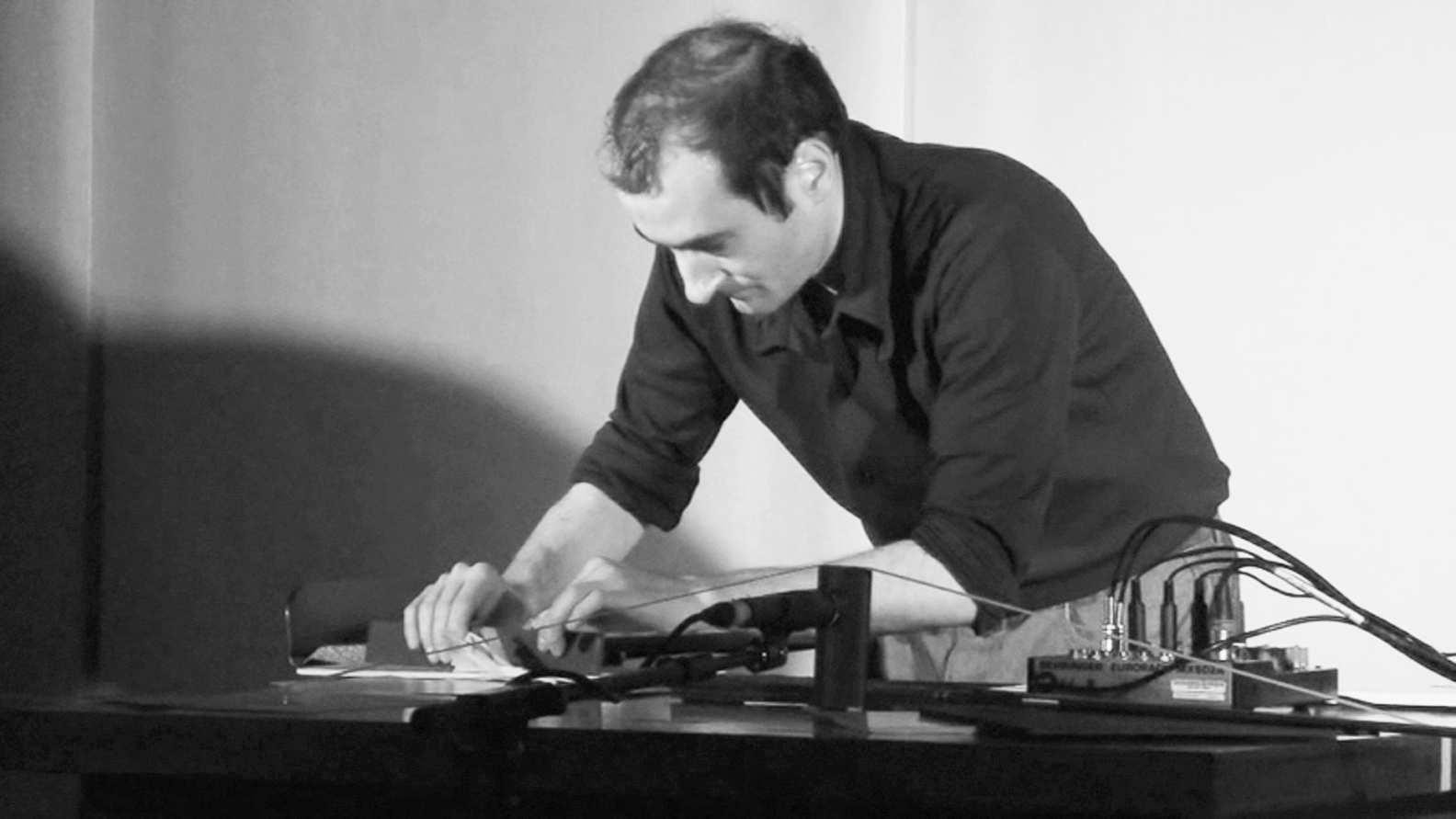| Y |
|
||
"When Dionis Escorsa tells of the traumas of the Balkan war, he conducts fieldwork in ellipses and does completely without that concerned awkwardness of simplistic mass-media psycology -wich viewers are impatiently waiting for." Heinz Peter Schwerfel
This film describes a collective awakening from a war nightmare. It reveals the dreams of some inhabitants of a destroyed small serbian town, lost inside croatian territory. From this particular state, we experience their personal reconstruction processes, both mental and physical.
A homeless alcoholic sleeps in a carton box placed in the middle of a rail road. He dreams that he is a tree growing inside the ruins of his house, which was destroyed some years ago in a bombing raid during the balkan wars. Not far away from him, a girl dreams as well. She sees herself abandoning a baby in the forest.
It is now over a decade since the war in the Balkans came to an end. The disaster has slowly dissolved into the river of collective historical memory, and the many documents and interpretations of the events, together with their causes and consequences, have gradually been filed away and settled in the form of fragmented, partial, partisan information. The real events will remain for ever blurred by the unreal veil of a nightmare that we are still waking up from and already starting to forget. The film plunges into the unconscious of the two archetypes that play a part in all conflicts – victim and aggressor – infiltrating their respective nightmares in order to transmit, from an oneiric state, the psychological scars that lay dormant in the consciousness of many inhabitants of former Yugoslavia, and to contribute to their slow post-traumatic awakening.
"War is a mental illness of the collective consciousness" For eight years, I had close links to Serbia. The first time I travelled there Milosevic was still in power, a few months after the American bombings. I found it disconcerting that everybody I met that first time seemed to be in incredibly good humor. The wounds of the Belgrade bombing were festering all around us, but I had no earlier impression to compare it too, and it seemed to me anything but dejected. The only thing that set it apart from any other city was a certain neglect, regular traffic jams due to some bridges that had been destroyed, and the almost sculptural remains of bombed buildings. During those first few days I understood the theatrical sense of war, its epic yearning. I saw the persistence of its echo, produced by its own reverberations. I understood the canine sense of war, in which strutting always accompanies and shapes aggression. And its expansive sense, like a hurricane that can flatten several ministries in a single scream. I understood its essential nature, and I saw that all the analyses surrounding war, which are inevitably biased and incomplete, feed into this resounding echo. And then, I came to the perhaps illusory conclusion that the concept of impartiality is what binds and fuels social experience, and that what we call "conflict" is simply a localized descent into partiality. War operates graphically, as in the two branches of the letter "Y". All conflict involves traumatic loss of the primordial unified identity, an escape towards inhumanity, an acceptance of partiality. Many theories support the idea that humanity is a single organic whole, and that its individual members form an indivisible part of it, like cells in a higher life form. If this is true, the phenomenon of war would be an illness of humanity. But Antoine de Saint-Exupery's famous claim that "War is a disease. It is like typhus" would not be entirely accurate. Typhus is an external pathogenic agent that infects the body and reproduces itself within it. War is fuelled by conflicts among cells of the same kind, from the same body. As such, war would be an endogenous disease, like genetic, degenerative and autoimmune illnesses, and also like mental illness. If we extend the analogy to equate brain and government, the latter description seems particularly apt. Which would mean that we need to develop an overall therapeutic theory that allows us to psychoanalyze the collective unconscious. "Rape as strategy" The never-ending list of conflict is not exclusive to the Balkans. The disease of war has been around always and everywhere, like all diseases. This means that eradication is a global issue that requires the efforts of the body as a whole and all its members individually. The many psychological consequences of war – which affect victims and aggressors, and also aggressors who were previously victims and vice versa – are part of its expansive echo and contain the seed for its resurgence. The rapists of the 20,000 women who suffered this humiliation in the most recent Balkan wars were very aware of this. Either that, or they did it instinctively. "War rape occurred as a matter of official orders that were part of a military strategy. During the Bosnian war, so-called "Rape camps", aimed at the birth of a new generation of Serb children, were reportedly used. The purpose of these camps was to impregnate the Bosnian and Croatian women held captive. Because of the patrilineal make-up of their society, in which children inherit their father's ethnicity, this was used as a method of ethnic cleansing. In the camps, women were kept in confinement until the late stages of their pregnancies." In any case, paradoxically, simply mentioning this already contributes to the reverberation mechanism by which war expands itself. "The forgetting of dreams" I have tried, though I may not have succeeded, to make a film about a real war that somehow avoids being part of the expansive echo mentioned above. Or, in order words, that does not justify it. I've tried to do this through the cinematic strategy of creating a dreamlike virtuality that can operate somewhat like the subconscious, hiding instances of guilt and hate through symbolic subterfuge. The list of wars in the history of the Balkans is as difficult to remember as any other long series of random facts. It is easier to remember those that took place near the beginning or the end, but we tend to forget the ones in the middle unless they are meaningfully interlinked. The apparent meaninglessness of dreams leads us to forget them, which is the best thing that can happen to a war. Freud writes: "All that is orderly and coherent is really put into the dream during the attempt to recall it (…) but the modifications that the dream undergoes in its revision by the waking mind are not at all arbitrary. They preserve an associative connection with the content, whose place they take, and serve to show us the way to this content, which may itself be a substitute for yet another content." Ultimately, what can be psychoanalyzed is not the dream, but our own self-analysis of the dream. So whether we tell this story in one particular way or another will depend on us. This film aims to show – almost with a psychoanalytic intent – the difficult moment of recreating meaning as we collectively awaken from a nightmare of war.
|
DIONIS ESCORSA Born in Tortosa (Tarragona, Spain) in 1970. Dionis Escorsa started out as a visual artist painting in the early nineties, and gradually broadened the scope of his work to include photography, installations and video. In 1998 he began creating video-scenographies for dance and theatre companies. Highlights include "Solo por placer" and "Flexelf" with Mudances, the company led by contemporary dancer Àngels Margarit; "Vacanze", "Homes" and "One" for the company directed by the actor and theatre director Ernesto Collado; and "Salvatge cor" with the poet Albert Roig. He also collaborated with the social-artistic-territorial collective Rotor, founded by Vahida Ramujkic and Laia Sadurni. He worked on projects such as the zoological video-mapping of an urban neighbourhood in the midst of change ("Poblenow"), the organisation of the "AirAutonomy Journeys" to reconsider possible uses of the rooftops of Barcelona's Ciutat Vella, and the invention of a machine for encrypting videopsychomaps, "b4 alphabet", in Brooklyn. At the same time, he engaged in autonomous artistic research projects such as exploring non-linear rhizomatic storytelling through interactive audiovisual narratives ("Roots Garden"), analysing the paradox of reinserting images into the same reality they were taken from in video-installations, designing board games based on the urban strategies of uncivil behaviour, ("In(civic)"), trying to set up a drug vending machine in the middle of a techno music festival ("Pharmacy for a Rave"), putting together an insect-like collection of couples making love ("Butterfly Dust"), and kidnapping gallery owners in order to avoid holding an exhibition, videoblogging the whole experience ("Kidnapping the Gallery Owner"), and creating a "Room Service for Bombed Buildings" with teams of cleaning ladies in Belgrade, recently presented, among others, at the following venues: In addition, he made the short fiction films "Theater of agony" and "The Lost Mother", and co-directed the documentary "Storm and return home" with Vahida Ramujkic. "Y" is his fiction feature debut.
|
|
ESTEBAN BERNATAS Born in Barcelona in 1973, www.andoliado.com Studied Art in Fine Art school in Nantes, France between 1997 and 2001. Between 2002 and 2007 he founded and powered, alongside with Clément Darrasse and Michael Quistrebert the Foundation 30km/s, dedicated to support and develop projects of contemporary artists. Some of the art-paper publishing projects are listed here: www.edicions30kms.net In 2004 he created Andoliado Producciones www.andoliado.com. 2008 Andoliado Producciones co-produced the documentary film "L'encerlement. La démocratie dans les rets du néolibéralisme" directed by Richard Brouillette, a Montreal based filmmaker. A Masterclass on neoliberalism, the origins and its mechanisms of sprawl. Best Film at Nyon 2009 and Yamagata Documentary FF. Premiered at Berlinale 2009. In 2009 he co-produces the documentary "La Casa" by Tayo Cortés. He also created in Barcelona an alternative cinema with a bar, the ZUMZEIG CINEMA
|
||
| VAHIDA RAMUJKIC
www.rotorrr.org Vahida Ramujkic co-directed with Dionis Escorsa "Storm aand return home" nd directed "Self-Aid". "Y" uses scenes from both films. She also appears as an actress, in the role of "the daughter". Bojana Jelenic, actress playing "the mother", is, in real life, her grandmother. In 2001 with Laia Sadurní in Barcelona she founds Rotor Collective that will be active until 2006. Initiating series of explorations in public space, in playful and improvised manner Rotor is developing its own methods and strategies for learning trough experience and creative practice balancing on the border between art, activism, and social studies. Long personal experience and research in the field of administrative procedures for the regulation of foreigners in the European Union in 2006 takes form of a book "Schengen with ease". Returning to the domestic terrain, during the traveling trough the ex-Yugoslav republics in 2006, she initiates "Disputed Histories Library", collecting history text-books issued in different time periods in those regions. This library will open path for the organization of series of workshops comparing and analyzing opposed historic narratives as a long-
|
||
ALFREDO COSTA MONTEIRO
Born in 1964 in Porto (Portugal) Alfredo Costa Monteiro studied sculpture/installation at the fine art school in Paris with Christian Boltanski. In 1992, he moved to Barcelona. Since then, his work stands somewhere between visual arts, visual poetry and sound. His installations and sound pieces, all of a low-fi character, have in common an interest for unstable processes, raw materials and gestures, where the manipulation of objects as instruments or instruments as objects has a strong phenomenological aspect. From 1998 to 2006, he was member of espai 22a, an independent collective for contemporary art. From 2001 to 2006, he was also member of IBA col.lectiu d'improvisació. He has given workshops at Hangar (Barcelona, Spain), ESDI (Barcelona, Spain), Janácek Academy of Music and Performing Arts (Brno, Czech Republic), Arteleku (San Sebastián, Spain), Facultad de Bellas Artes, (Pontevedra, Spain), ESAD (Caldas da Rainha, Portugal), Crossroads during John Cage's Year, (Lublin, Poland) among others. He has toured in Canada, Japan and Europe. |
||
